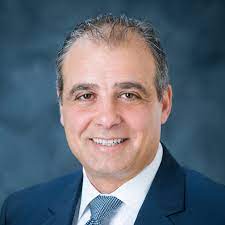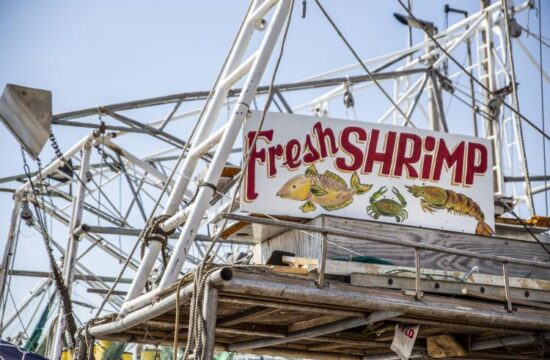Tatum and Craig Tatum, Tatum’s brother, started renovations. They kept discovering traces of the Tatum century-old Tatum legacy at Hattiesburg. Tatum stated, “It was really cool once we started demo-ing buildings.” “We started finding lumber from my great-great-grandfather’s lumber mill, and it was stamped ‘TATUM LUMBER CO.'” So Tatum repurposed the wood into furniture for his own house as he refurbished the buildings themselves into loft apartments. Tatum is the latest chapter in Tatum’s plan to transform the city’s landscape. He sits in the lobby at the Hotel Indigo. The boutique hotel is located in Midtown’s new shops and restaurants. It pays tribute to the city’s origins as a transit hub and timber hub. The lobby looks like a green and gold train car; the rooms contain portraits of the Tatums’ great-great-grandfather W.S.F. Tatum was a Hattiesburg mogul in the early 20th century. His lucrative logging and railroad ventures earned him stints as mayor. The city’s economy now depends on the University of Southern Mississippi with over 2,000 employees and Hattiesburg Clinic and Forrest General Hospital, which collectively employ around 5,500 people. Further away, the military post Camp Shelby is located at the city’s southern border. The mixed-use Midtown development is located across the street of the USM campus. It aims to improve the bridge between USM and the hospital as well as to encourage more development in the city. This goes against Toby Barker’s conventional wisdom that the I-98 corridor should be built west. The Midtown development, which was once a piece of university land with a tornado-damaged dormitory that was destroyed, represents a $35million investment and 250 jobs. According to Todd Jackson, executive vice president of Area Development Partnership, the Midtown development is a $42 million investment in a city of 47,000 people. It has been called a “beacon for tourism” and a leader of job growth. Jackson stated that Greater Hattiesburg is currently leading the State of Mississippi in terms of job growth, with a 2.4% increase of employment in the past year. It is one of only 59 MSAs to experience employment gains. “Quality life offerings such as the District at Midtown further strengthen the already strong and diverse economy.” Jackson said that Midtown is more then just luring people back from the nearby suburbs, which have shifted to Lamar County. It’s about making Hattiesburg a part of a group of small, but thriving, cities in the Southeast. Think Greenville, S.C. (a model Tatum takes inspiration from) or Tuscaloosa. Barker stated that Midtown was a major domino to fall as we strive to be in the larger league. Hattiesburg is not only focusing on Midtown’s development, although it was built around three and a quarter years ago. Mayor Barker noted that the I-98 West corridor is still developing on its own without any incentives. However, the city is exploring creative ways to attract businesses to the area. Barker stated that the city has several economic tools to attract businesses, including tax-increment financing for Midtown and sales rebates for new retail outlets. Barker stated, “We believe equity.” Barker stated that he believes in equity and wants every neighborhood to experience the same momentum as Midtown. Barker also said that his goal was to make Hattiesburg “seamless,” which Rick Baker coined. This refers to a city where crossing railroad tracks or crossing a street doesn’t produce a discernible difference. This is a city where all neighborhoods enjoy high quality of life, excellent infrastructure, and amenities. The city’s downtown is also benefitted by Midtown development, Andrea Saffle, executive Director of Hattiesburg Historic Downtown Alliance, said. Tatum also has buildings downtown that she plans to convert into apartments. There is a waiting list in the area for units. She also mentioned that affordable units are being built in the area, such as the redevelopment and renovation of the Hattiesburg High School. Saffle and other business leaders said they don’t believe that gentrification or displacement of residents, which are often corollaries to development in America’s cities, is a problem to face now or in Hattiesburg. Tatum noted that this doesn’t mean property prices around Midtown aren’t rising. Tatum will need to purchase “some houses next to” in order to construct a parking garage for the next phase of the project. These houses have become more expensive over the past three years. Former Hattiesburg councilman Eddie Holloway, USM Dean for Students, is encouraged by the “regentrification” in downtown and midtown. However, Holloway said that he expects to face a challenge in establishing homeownership over renting in the coming years. The steady return of people from the suburbs has brought attention to the city’s public schools system. This system has suffered from white flight, as Joseph Crespino and Charles Bolton have documented. Tatum says, “That’s an economically problem I can’t solve with building a project.” But state senator Billy Hudson, R. Hattiesburg, said that while the school district could benefit from more money and well-paid teachers, the problem of Hattiesburg’s schools isn’t unique. Tatum stated that if Hattiesburg is to grow, it will require a smart growth strategy. Tatum is likely to be part of that plan. Tatum, a Hattiesburg native who has returned to his hometown to seek out a better use for the land, said that he isn’t trying to squeeze every dollar from the turnip. Tatum may reconsider his original plan for the land if the city finds a better use. Saffle stated, “He’s on top of the world right?” “He’s a local builder and he’s investing here in Mississippi.” Saffle said. Visit our Events page for more information.










